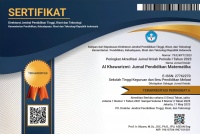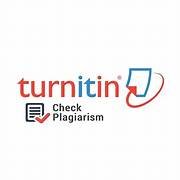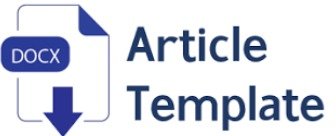ANALISIS GAYA BELAJAR MAHASISWA PENDIDIKAN MATEMATIKA STKIP MELAWI
DOI:
https://doi.org/10.46368/kjpm.v4i2.2338Abstract
Abstrak: Tujuan penelitian ini ialah untuk mendapat gambaran tentang klasifikasi gaya belajar yang dimiliki mahasiswa Pendidikan Matematika STKIP Melawi Angkatan 2022. Metode pengumpulan data menggunakan metode angket dan Observasi. Adapun langkah penelitian ialah: 1) penyusunan instrumen; 2) pengambilan data; 3) analisis data; 4) uji validitas data; dan 5) pelaporan. Kriteria yang digunakan dalam pengujian keabsahan data menggunakan Kepercayaan (kreadibility) melalui triangulasi sumber dan memperpanjang kehadiran di lapangan. Berdasarkan hasil penelitian dan pembahasan dapat disimpulkan bahwa mayoritas mahasiswa memiliki kecenderungan bergaya belajar Visual, yaitu sebesar 47,83%, diikuti gaya belajar Audio dan Kinestetik dengan prosentase secara berturut- turut yaitu 33,70% dan 18,48%. Dengan sebaran gaya belajar ditinjau dari tingkat kognitif: (a) 47,83% mahasiswa bergaya belajar visual terdiri dari 9,09% level kognitif tinggi; 52,27% level kognitif sedang dan 38,64% mahasiswa yang memiliki level kognitif rendah; (b) 33,70% mahasiswa bergaya belajar visual terdiri dari 12,90% level kognitif tinggi; 64,52% level kognitif sedang dan 22,58% mahasiswa yang memiliki level kognitif rendah; dan (c) 18,48% mahasiswa bergaya belajar visual terdiri dari 0% level kognitif tinggi; 64,71% level kognitif sedang dan 35,29% mahasiswa yang memiliki level kognitif rendah. Artinya, tidak ada gaya belajar yang lebih baik dari yang lainnya.
Â
Kata Kunci: klasifikasi, gaya belajar, VAK, visual, auditori, kinestetik
 Â
Â
Abstract : The aim of this research is to get an idea of the classification of learning styles of Mathematics Education students at STKIP Melawi Class of 2022. The data collection method uses questionnaires and observation. The research steps are: 1) preparation of instruments; 2) data collection; 3) data analysis; 4) test data validity; and 5) reporting. The criteria used in testing the validity of the data use credibility through source triangulation and extended presence in the field. Based on the results of the research and discussion, it can be concluded that the majority of students have a tendency towards a Visual learning style, namely 47.83%, followed by Audio and Kinesthetic learning styles with percentages respectively of 33.70% and 18.48%. With the distribution of learning styles in terms of cognitive level: (a) 47.83% of students have a visual learning style consisting of 9.09% of high cognitive level; 52.27% of students had moderate cognitive level and 38.64% of students had low cognitive level; (b) 33.70% of students have a visual learning style consisting of 12.90% of high cognitive levels; 64.52% of students had moderate cognitive level and 22.58% of students had low cognitive level; and (c) 18.48% of students with a visual learning style consisting of 0% high cognitive level; 64.71% had medium cognitive level and 35.29% of students had low cognitive level. This means that no learning style is better than another.
Â
Keywords: classification, learning styles, VAK, visual, auditory, kinestheticReferences
DePorter, Bobbi & Hernacki, Mike. (2000). Quantum Learning : Membiasakan Belajar Nyaman dan Menyenangkan. Penerjemah : Alwiyah Abdurrahman. Bandung : Sari Meutia
Desmita. (2010). Psikologi Peserta Didik Panduan Bagi Orang Tua, Guru Dalam Memahami Psikologi Anak Usia SD, SMP dan SMA. Bandung : PT Remaja Rosdakarya.
Dwijayanti, I. 2014. Efektivitas Kelas Humanistik dalam Pembelajaran Matematika terhadap Karakteristik Peserta Didik. Jurnal Aksioma. Vol 5 (1): 69-78.
Entwistle, N. (1988). Motivational factors in students' approaches to learning. In R. R. Schmeck, Learning strategies and learning styles (pp. 21-51). New York: Plenum.
Fleming, N.D., dan Mills, C. (1992). Not Another Inventory, Rather a Catalyst for Reflection. To Improve the Academy. Vol. 11: 137- 155
Gobai, Yosep. (2005). “Pengaruh Penggunaan Bahan Ajar Dan Gaya Belajar Terhadap Hasil Belajarâ€. http://re-searchengines.com/art05- 94.html
Gordon, Jeannette.(1999). Revolusi Cara Belajar. Penerjemah : Ahmad Baiquni. Bandung:Kaifa.
Gunawan, Adi. (2004). Born To Be a Genius. Jakarta: Gramedia Pustaka Utama Gunawan, Adi W. (2006). “Genius Learning Strategiâ€. Jakarta: Pustaka Utama
Hall M. (2008). The effect of cooperative learning groups and competitive strategies on math facts fluency of boys and girls. The effect of Learning Strategies. Kennesaw State University. P 1-28.
Hamzah B, Uno. (2010). Orientasi Baru dalam Psikologi Siswa yang memiliki gaya belajar. Jakarta: Bumi Aksara.
Hartanti dan Arhartanto. (2003). Profil Gaya Belajar Mahasiswa Baru: Survei Berdasarkan Metode Barbed an Swassing’ Anima. Indonesian Psycgological Journal. Vol. 18, No. 3, hal. 295-307
Ma, Vania J & Ma, Xin. (2014). A comparative analysis of the relationship between learning styles and mathematics performance. International Journal of STEM Education. 1:3. DOI: 10.1186/2196-7822-1-3. licensee Springer.
MacKeracher, D. (2004). Making sense of adult learning, (2nd ed.). Canada: University of Toronto Press Incorporated.
Moleong. J Lexy. (2007). Metode Penelitian Kualitatif. Bandung: PT. Remaja
Mulyasana, Dedy. (2011). Pendidikan Bermutu dan Berdaya Saing. Bandung : PT Remaja Rosdakarya
Nasution. (2010). Berbagai Pendekatan dalam Proses Belajar dan Mengajar. Jakarta: Bumi Aksara
Prashign, Barbara. (2007). The Power of The Learning Styles: Memicu Anak Melejitkan Prestasi dengan Menggali Gaya Belajarnya. Penerjemah: Nina Fauziah. Bandung: Kaifa.
Roger, C. (1989). Freedom To Learn. Columbus: Charles E. Merrill Publishing Company. Rose, Colin & M., J. Nicholl. (2002). Cara Belajar cepat Abad XXI. Bandung: Nuansa.
Singh, N.K. & A.R, Agwan. (2000). Encyclopaedia of the Holy Qur’an. New Delhi: Balaji Offset, Edisi I, 175
Sudjana dan Ibrahim. (2001). Penilaian dan Penelitian Pendidikan. Bandung. PT Gramedia
Suherman dkk. (2001). Strategi Pembelajaran Matematika Kontemporer. Jurusan Pendidikan Matematika UPI. Bandung
Sukardi. (2004). Metodologi Peneitian Pendidikan. Jakarta: Bumi Aksara
Willing, K. (1988). Learning Styles in Adult Migration Education. Adeliade, Australia: National Curriculum Resource Center
Willing, K. (1988). Learning Styles in Adult Migration Education. Adeliade, Australia: National Curriculum Resource Center
Downloads
Published
How to Cite
Issue
Section
Citation Check
License
Authors who publish with this journal agree to the following terms:
1. Authors retain copyright and grant the journal right of first publication with the work simultaneously licensed under a Creative Commons Attribution License that allows others to share the work with an acknowledgement of the work's authorship and initial publication in this journal.
2. Authors are able to enter into separate, additional contractual arrangements for the non-exclusive distribution of the journal's published version of the work (e.g., post it to an institutional repository or publish it in a book), with an acknowledgement of its initial publication in this journal.
3. Authors are permitted and encouraged to post their work online (e.g., in institutional repositories or on their website) prior to and during the submission process, as it can lead to productive exchanges, as well as earlier and greater citation of published work.






